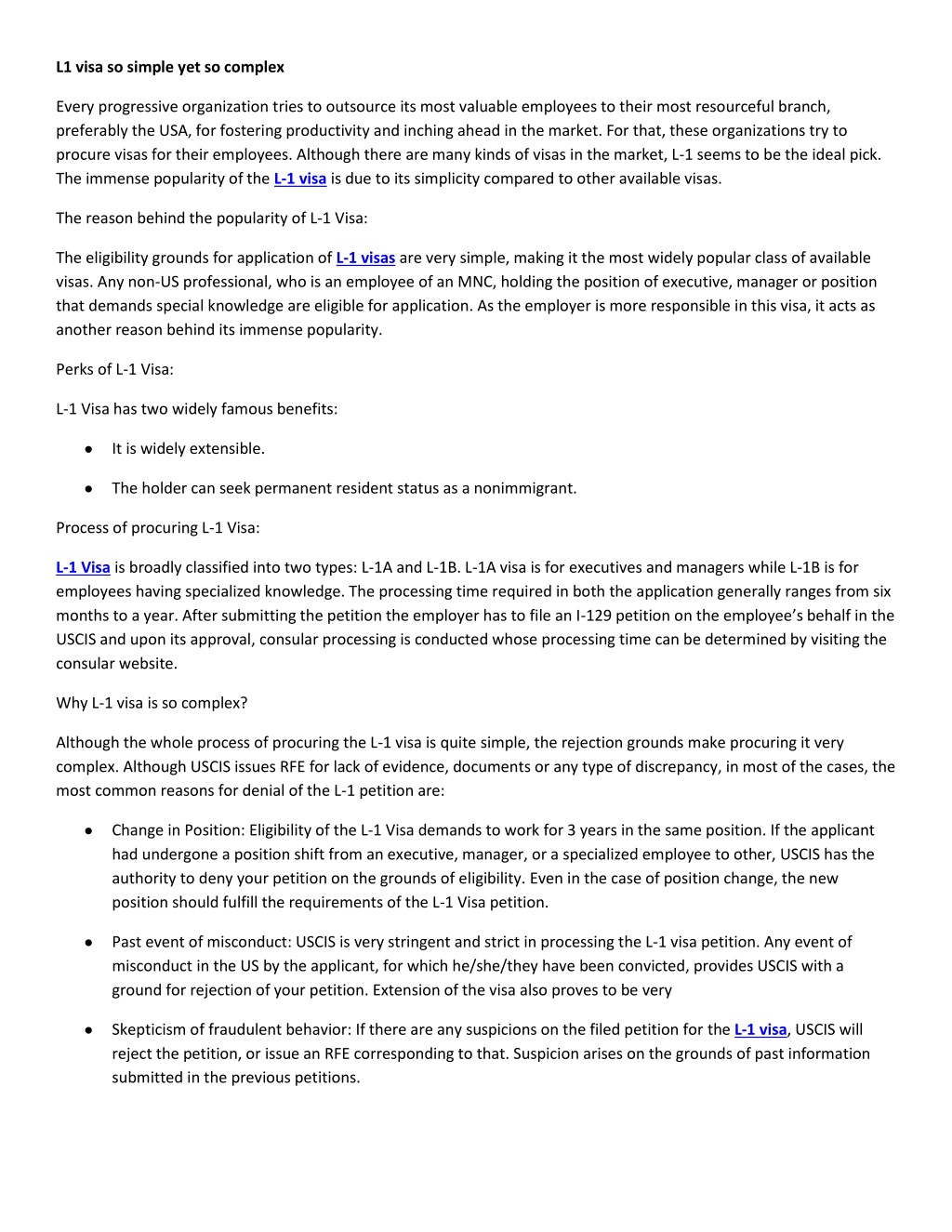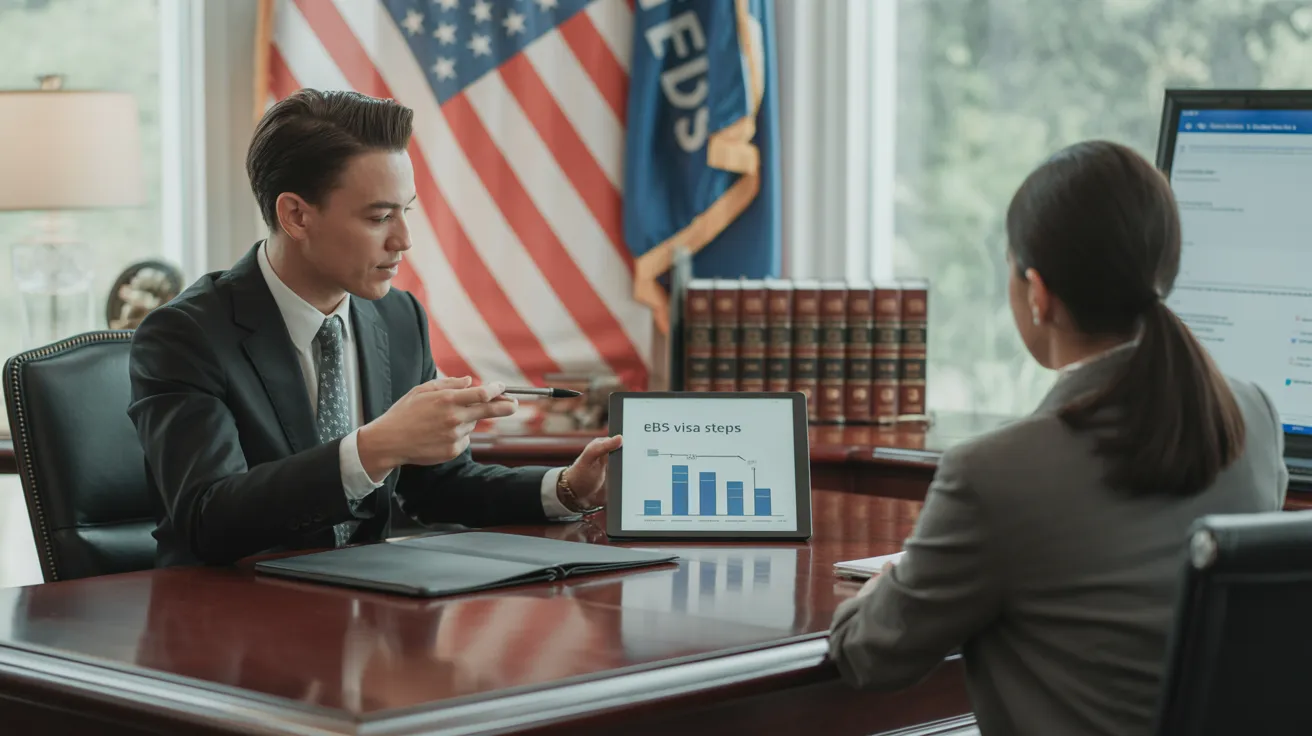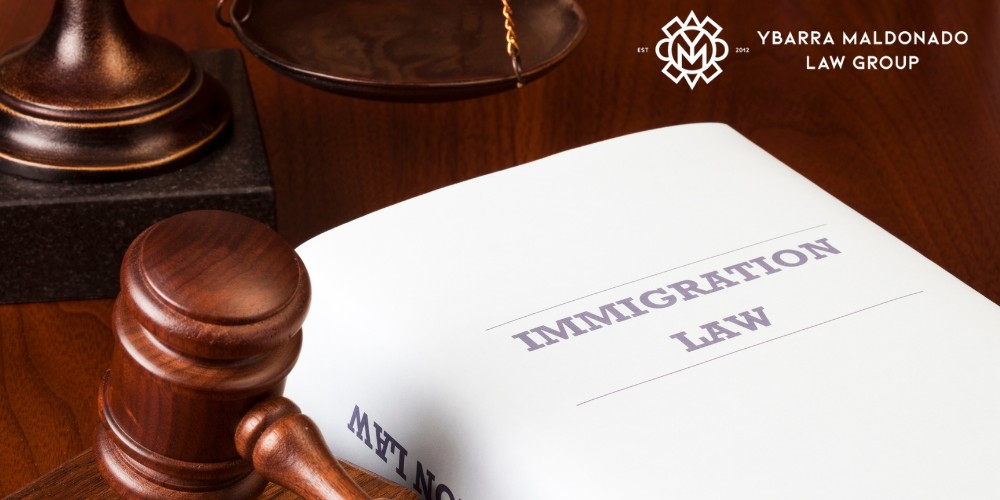The L1 Visa PDFs
Table of ContentsL1 Visa Can Be Fun For AnyoneAbout L1 VisaGetting The L1 copyright WorkTop Guidelines Of L1 VisaThings about L1 VisaA Biased View of L1 Visa
Offered from ProQuest Dissertations & Theses International; Social Scientific Research Costs Collection. DHS Workplace of the Examiner General. Obtained 2023-03-26.
United State Department of State. Recovered 2023-02-08. Tamen, Joan Fleischer (August 10, 2013).
Unknown Facts About L1 Visa
In order to be eligible for the L-1 visa, the international company abroad where the Beneficiary was used and the U.S. company have to have a qualifying partnership at the time of the transfer. The various kinds of certifying relationships are: 1.
Business An owns 100% of the shares of Firm B.Company A is the Parent and Business B is a subsidiary. There is a qualifying partnership between the 2 companies and Business B ought to be able to sponsor the Beneficiary.
Instance 2: Business A is integrated in the U - L1 Visa.S. and intends to petition the Beneficiary. Business B is integrated in Indonesia and uses the Beneficiary. Firm An owns 40% of Firm B. The remaining 60% is possessed and managed by Company C, which has no connection to Firm A.Since Firm A and B do not have a parent-subsidiary partnership, Business A can not sponsor the Recipient for L-1.
Instance 3: Company A is incorporated in the U.S. and wishes to seek the Beneficiary. Firm B is integrated in Indonesia and employs the Recipient. Firm An owns 40% of Firm B. The staying 60% is owned by Business C, which has no relation to Firm A. Nonetheless, Company A, by official agreement, controls and complete takes care of Firm B.Since Firm A possesses less than 50% of Business B but takes care of and controls the firm, there is a certifying parent-subsidiary relationship and Business A can fund the Beneficiary for L-1.
Our L1 Visa Ideas
Business B is integrated in the United state
L1 Visa Fundamentals Explained

The L-1 visa is an employment-based visa classification developed by Congress in 1970, permitting multinational firms to transfer their managers, execs, or key employees to their U.S. procedures. It is frequently referred to as the intracompany transferee visa.

Furthermore, the recipient should have worked in a managerial, exec, or specialized employee placement for one year within the three years preceding the L-1A application in the international company. For new workplace applications, foreign work has to have been in a managerial or executive capacity if the recipient is concerning the USA to work as a supervisor or exec.
See This Report on L1 Visa

If approved for a united state company find out more functional for more than one year, the initial L-1B visa is for approximately three years and can be expanded for an added two years (L1 Visa). Conversely, if click here the U.S. business is newly established or has been operational for much less than one year, the preliminary L-1B visa is provided for one year, with extensions available in two-year increments
The L-1 visa is an employment-based visa group developed by Congress in 1970, allowing international companies to move their supervisors, execs, or crucial workers to their U.S. procedures. It is commonly referred to as the intracompany transferee visa.
Excitement About L1 Visa
Furthermore, the recipient needs to have operated in a managerial, exec, or specialized staff member placement for one year within the 3 years coming before the L-1A application in the foreign firm. For new workplace applications, foreign work must have been in a managerial or executive capability if the recipient is coming to the USA to work as a supervisor or executive.
for as much as 7 years to oversee the operations of the U.S. affiliate as an executive or manager. If provided for an U.S. company that has been functional for greater than one year, the L-1A visa is at first granted for as much as three years and can be expanded in two-year increments.
If given for an U.S. firm operational for greater than one year, the first L-1B visa is for as much as 3 years and can be extended for L1 Visa process an added two years. On the other hand, if the U.S. firm is newly developed or has actually been operational for much less than one year, the initial L-1B visa is provided for one year, with extensions readily available in two-year increments.